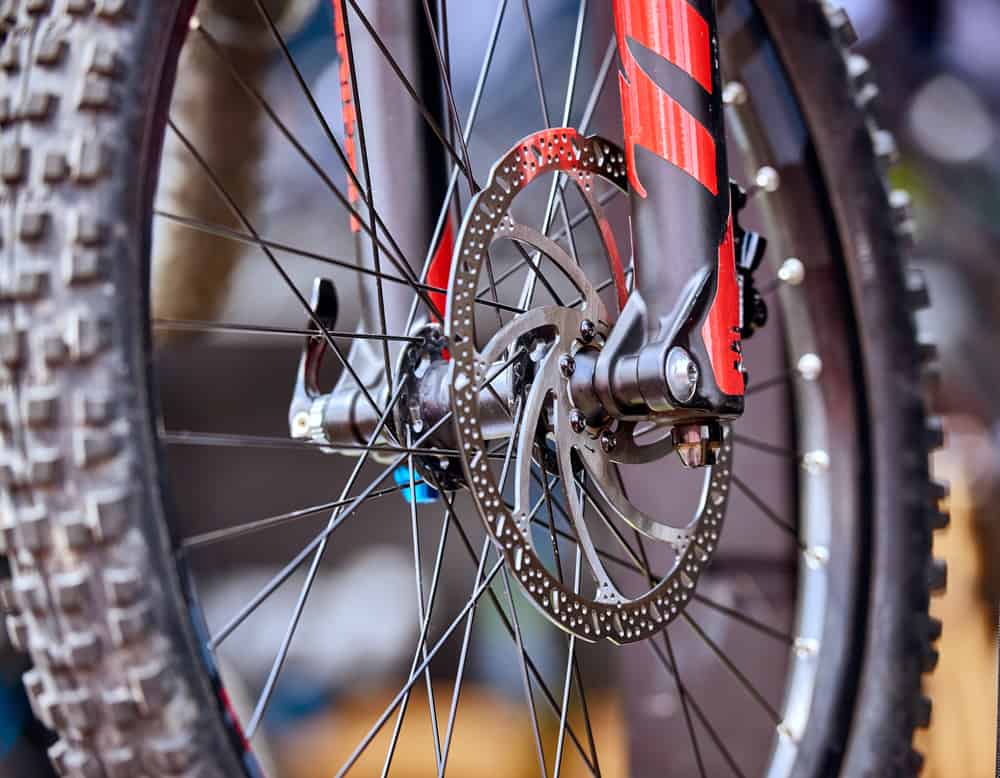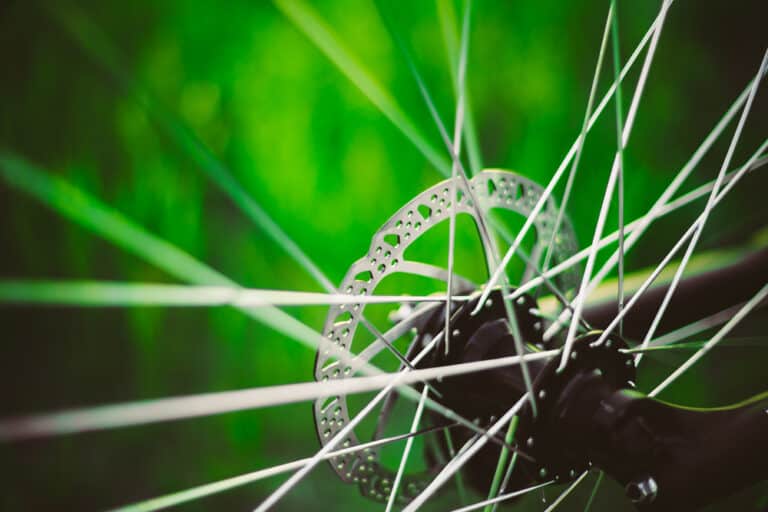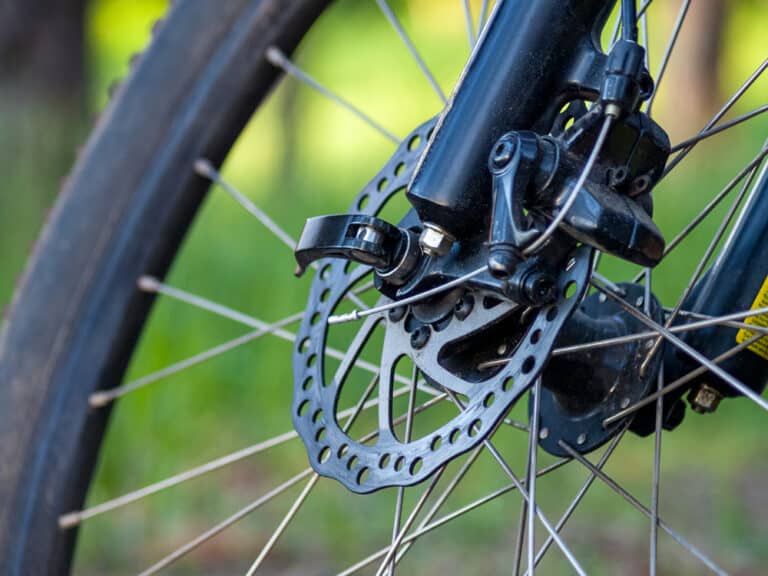Why Are MTB Hubs So Expensive?

Editorial credit: Danny Iacob / Shutterstock.com
Even though we all know that MTB hubs are essential components of a bike – some are ridiculously pricey! And it’s only natural to wonder whether they will make a big difference in your bike’s performance and if it is worth spending a bunch of money on expensive hubs.
MTB hubs are expensive because they are manufactured from lightweight carbon fiber, with ergonomic designs that enhance your bike’s speed and performance. And they have enclosed cartridge bearings, are serviceable on the road, and contain durable stainless steel freewheels for harsh terrains.
There is so much conflicting information about whether upgrading MTB hubs to more expensive versions is worth it. So, if you want to know whether you should spend your hard-earned cash on a new set of high-end hubs – read on!
Here’s Why MTB Hubs Are Expensive
Most cheaply manufactured MTB hubs are produced from inexpensive, lightweight materials like aluminum. However, they are not self-serviceable due to the structure of their cup and cone bearings.
Expensive MTB hubs are crafted from quality carbon fiber materials that are more costly. And in high demand, as they weigh far less than cheaper versions. They are also more durable and can withstand rugged and challenging muddy terrains.
Another prime characteristic of more high-end MTB hubs is their hardy stainless steel freewheels, which are far more robust to endure high jumps and harsh landings.
Expensive MTB hubs are also in demand for technically challenging terrains as they have more POE or points of engagement. So, they perform much better as they engage far quicker than cheaper versions with less POE.
Are Expensive Bike Hubs Worth It?
Your bike’s hubs play a pivotal role in its performance. They connect with your bike’s axles and spin as fast as you peddle. But, of course, that’s with the proviso that they are high-performing MTB hubs.
In a nutshell – should your current hub’s ball-bearings malfunction and create additional drag, your wheels will not turn as fast as they should, slowing your bike down significantly.
Investing in quality MTB hubs is worth it if you want a faster and more enjoyable ride.
Cheap Vs. Expensive MTB Hubs
Understanding the main differences between cheap and expensive MTB hubs is essential, especially when considering an upgrade.
Most cheap hubs contain cup and cone bearings (movable ball bearings in a cup), fewer freehub points of engagement (POE), and steel axles, and their freehubs are not serviceable.
Cheaper hubs cannot be opened as they are press-fit, unlike more expensive versions that can be opened and repaired on the go.
In stark contrast, quality hubs are produced with cutting-edge designs, and they are serviceable, have enclosed cartridge bearings, and are far more tolerant to machining.
Although, it’s essential to point out that durability is not always dependent on the hub’s price, as steel axles are sometimes more reliable and better equipped to deal with hefty touring loads.
While cheaper hubs can be damaged when water or dirt enters the cup and cone bearings, they are protected by grease to repel water, including a rubbery dust seal.
So, they are reliable if you don’t ride through big puddles of water and replace the hub’s bearings every year.
The advantage of investing in more expensive hubs is that they are easy to fix and mainly water and dustproof resistant. So, you don’t have to stress about riding through puddles of mud.
But the most significant benefit of having quality hubs with enclosed cartridge bearings is that you can service it yourself on the roadside by slotting in a freehub body or a spare cartridge bearing, and you’re ready to hit the road.
Expensive hubs also come in a wide range of cool colors and maximum engagement points for optimal performance.

Do High-End MTB Hubs Make A Difference?
Even though there are several ways to enhance your bike’s performance, upgrading your hubs is a good start, especially as they are connected to your wheels.
However, if you are strapped for cash and cannot afford to upgrade them right now. Having your ball bearings serviced will make a massive difference in terms of your bike’s speed, handling, and reliability.
And, just like your car, well-maintained, serviced cheap hubs that have been appropriately adjusted and greased can be just as reliable and durable as their more expensive versions so that you will get a lot of miles out of them.
You can also get away with more affordable hubs in most instances, as freehubs rarely fail. However, if you are riding in remote locations and on rugged terrains investing in high-end, quality hubs is wise, as no one likes walking or carrying a busted bike!
At the end of the day, bikes are the ultimate machines that transform the energy transmitted from your pedaling power to its wheels and create a smooth, excellent ride. Thus, investing in quality hubs can significantly improve your bike’s overall performance.
Why Are Expensive MTB Hubs So Loud?
If you are considering upgrading your cheap hubs, it’s important to note that they will not be silent. Even if they can cost as much as your truck, they tend to sound like angry hornets on the rampage and not like silent ninjas!
Like cheaper alternatives, rear hubs produce noise when pedaling forward when their “pawls” (minute spring-loaded materials) grip onto the ratchet of your hub.
So, when you pedal backward or coasting, the rear hubs will be silent as they automatically disengage without noisily gripping the hub’s rachet.
Because expensive hubs contain less grease, powerful springs, and more pawls, including several points of engagement, they produce far more aggressive, louder sounds. So, you will most likely be heard before you are seen!
Conclusion
There’s no doubt that investing in expensive, quality MTB hubs can make a massive difference in your bike’s overall performance, with the added benefit of being serviceable on the go. However, in some instances, cheaper serviced hubs with new bearings and steel axles are more reliable in certain terrains.







